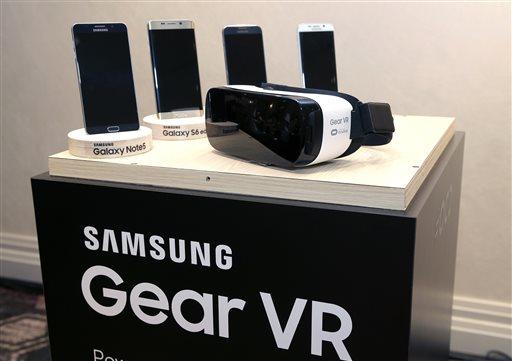
Section Branding
Header Content
Is It Finally Time For Virtual Reality? A GPB Sci-Tech Q&A
Primary Content

Virtual reality has been the Next Big Thing for a while, but when it comes to consumers actually using virtual reality in their homes, it’s always seemed to be a mirage. Until now, thanks to the first commercial application for VR, now available for holiday shoppers.
And more ways to put you into your favorite form of entertainment or gaming are heading your way.
GPB’s Bradley George and sci-tech correspondent Renay San Miguel talk about the new virtual reality devices for sale.
·The Samsung Gear VR headset went on sale last month, and it’s getting pretty good reviews. What do people seem to like about this version of virtual reality?
After years of talking about this technology and what would be required to bring it into the home, I’m pleasantly surprised at the price – 99 dollars. I was expecting in the neighborhood of $200-300. The reviews also say that Samsung has been able to make this a comfortable, non-headache inducing experience for the most part. After all, we’re talking about a visual and auditory experience that puts you into the action on the screen that’s a few inches in front of your eyes, and that can be jarring for some. And it appears to be easy to setup and use – just plug a phone into the Gear headset. But you have to plug a certain kind of Samsung phone into it, and the touchpad for playing games and swiping through apps and other options is on the side of the headset. No two-handed video game controller, in other words, but that’s coming soon.
·This could be a big seller for Samsung going into the holidays, but it’s more of a victory for the startup company that runs the technology inside the Gear.
That would be Oculus, and it’s becoming more apparent why Facebook and Mark Zuckerberg paid $2 billion last year to buy the company. Up until now you had to be one of the Silicon Valley elite or a regular attendee at the Consumer Electronic Show or E3 video game convention to try early prototypes, but if you did you were supposedly blown away by Oculus’ take on VR. In his Facebook message explaining the purchase, Zuckerberg said immersive gaming was just the start. He wants to apply the technology in other ways that would let you experience other things like sporting events or family gatherings. In the meantime, the Samsung device isn’t keeping Oculus from putting out a different, self-branded VR headset called the Oculus Rift sometime next year. There’s no release date or price set yet, but this Thursday is the Gaming Awards that will be aired on the online channels Twitch and YouTube, and Oculus is scheduled to make an announcement at that time, so maybe that’s when we’ll find out how much it will cost and when we can buy it.
·But when it comes out next year, the Rift may have some competition from some of the bigger names in technology.
Sony’s code name for its VR headset has been Project Morpheus, which conjures up all kinds of Matrix images in my head. But they just announced it will be called Playstation VR, and this past weekend, the company put out a video showing Japanese gamers reacting to what they were seeing on their headsets during a September convention. There is a U.S. Playstation Experience event this weekend in San Francisco, and maybe we’ll get pricing and release date info then. The smartphone maker HTC has the Vive headset coming out in the first half of next year, no price set yet there. And if you’ve seen any of the Microsoft videos on YouTube from their demonstrations of their Hololens technology at this year’s E3 convention, you were no doubt blown away like I was. This is more augmented reality, in that it puts computer-generated objects into the real world. They’ve done a good job showing on video what their headset experience will be like, although some have complained that it’s been nothing more than sticking Industrial Light and Magic special effects onto a video. But in one video I saw, a Minecraft village sprouts up like magic on a table on stage, and then someone is able to tunnel underneath it, fly around it , move entire sections of buildings with a wave of a hand. It’s very cool.
· Investors have been sinking a lot of money into virtual reality companies, but it’s not just because of the gaming opportunities, is it?
No, there are other industrial and less consumer-oriented applications for both virtual reality and augmented reality, and that is indeed why one analyst firm says $4 billion has been pumped into these companies over the past five years. Microsoft executives admitted that its first version may be too expensive for consumers, so it might go with licensing to developers and companies first. They’re talking about using Hololens to test-drive and virtually kick the tires on new cars. And Zuckerberg talked about the other uses for this technology – educational, scientific, communications-based. The New York Times has been applying VR technology to storytelling this year, putting readers inside a Syrian refugee camp, for example. The technology, and for some the pricing, are becoming more accessible, and as with any other next-level technology, that’s when people start dreaming up applications that really show things off.
Renay San Miguel is GPB's Science and Technology correspondent. He also hosts the Future Perfect podcast. Follow Renay on Twitter for the latest science and tech news from Georgia and beyond.
